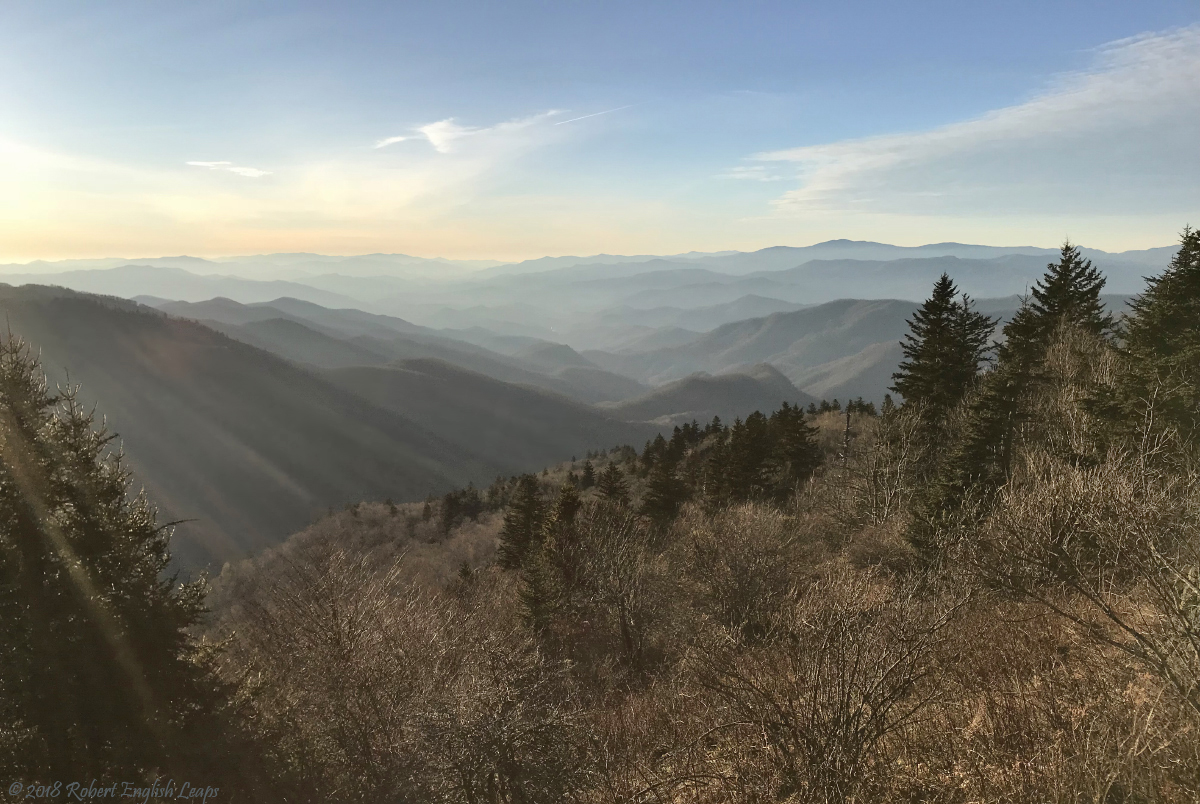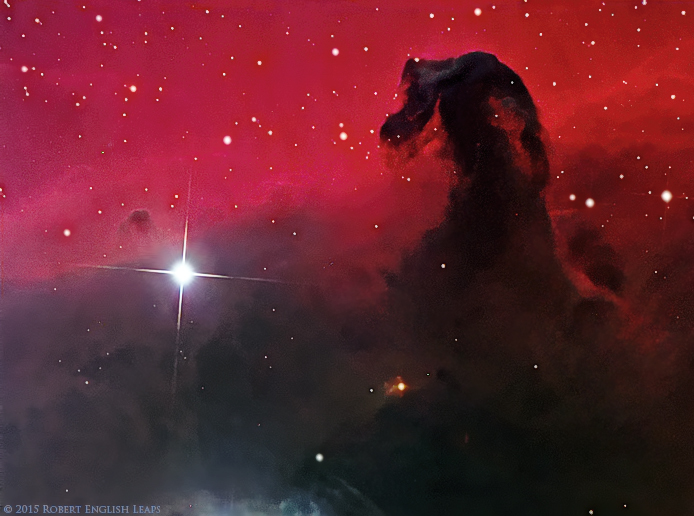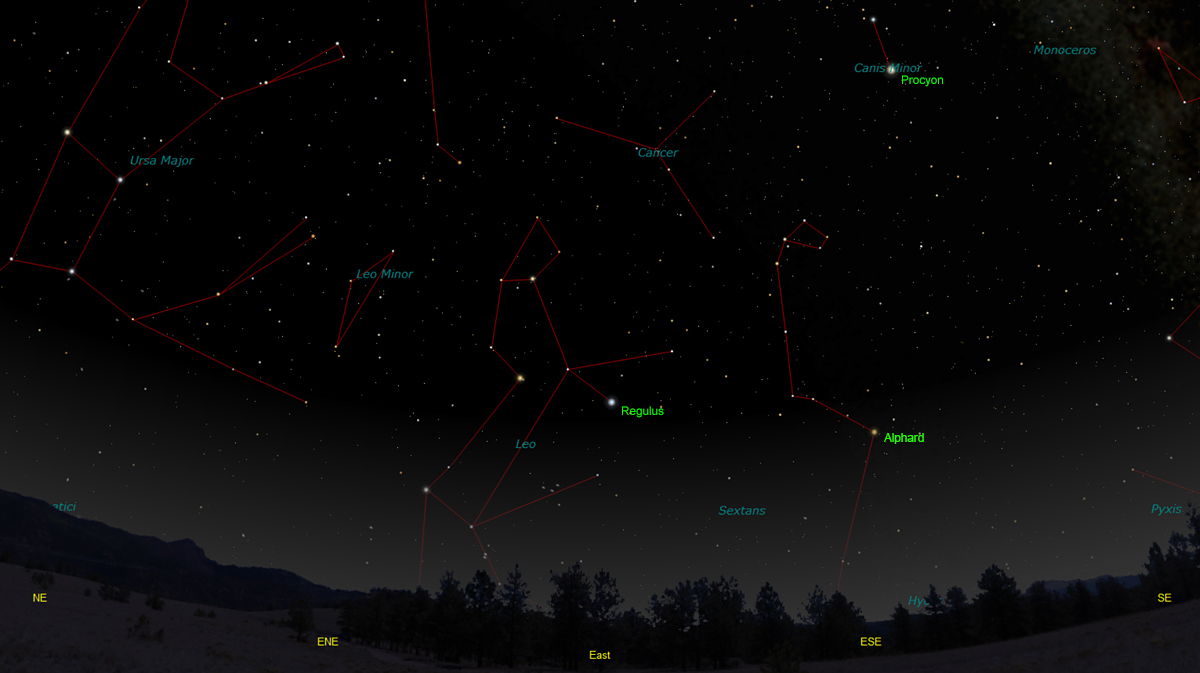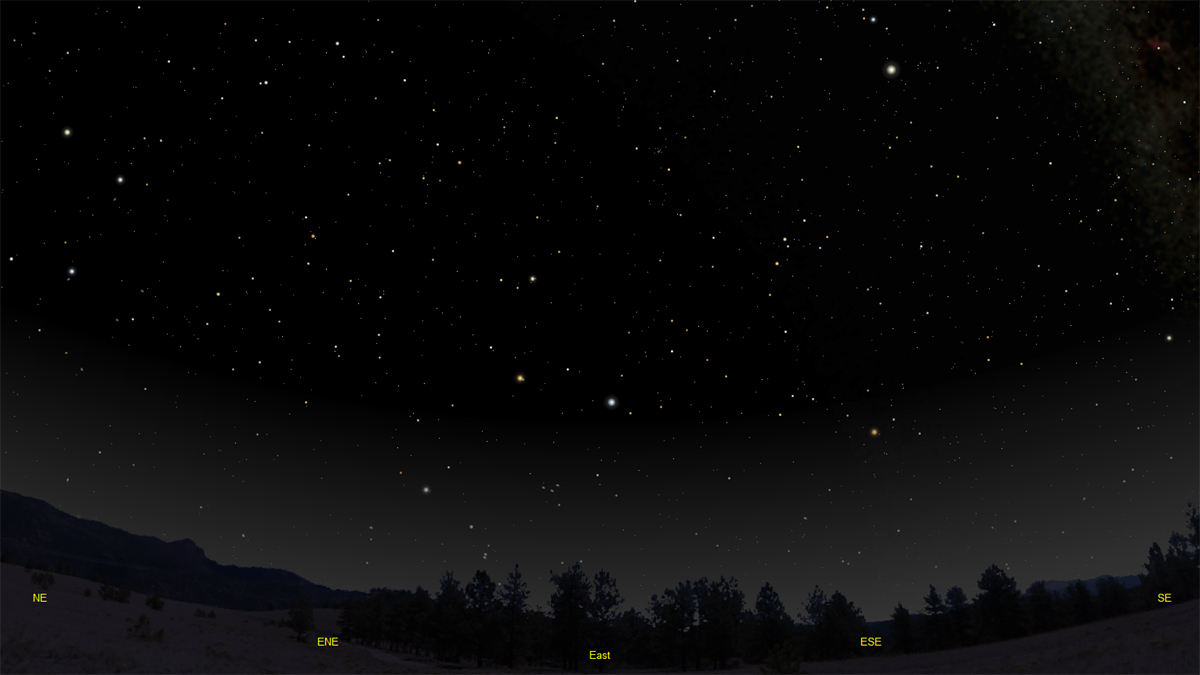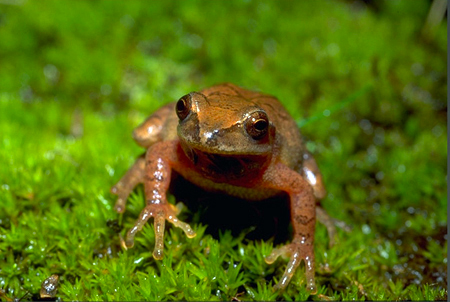The purpose of this feature is to give scout leaders, educators and naturalists an idea of some of the natural events coming up each month. We will try to cover a variety of natural events ranging from sky events to calling periods of amphibians, bird and mammal watching tips, prominent wildflowers and anything else that comes to mind. We will also note prominent constellations appearing over the eastern horizon at mid-evening each month for our area for those who would like to learn the constellations. If you have suggestions for other types of natural information you would like to see added to this calendar, let us know! Note: You can click on the hyperlinks to learn more about some of the featured items. To return to the Calendar, hit the "back" button on your browser, NOT the "back" button on the web page. All charts are available in a "printer friendly" mode, with black stars on a white background. Left clicking on each chart will take you to a printable black and white image. Please note that images on these pages are meant to be displayed at 100%. If your browser zooms into a higher magnification than that, the images may lose quality. Though we link book references to nationwide sources, we encourage you to support your local book store whenever possible.
Notes and Images From December 2017 Late December found us walking a stretch of the Mountains-To-Sea Trail in the vicinity of Waterrock Knob (6,292 feet elevation) in North Carolina. This spot is easily accessed via the Blue Ridge Parkway when the parkway is open. The short but strenuous hike to the knob was quite beautiful, but somewhat crowded with people during the holiday period. To find a quieter trail, we walked a bit of the MTS trail and found some pretty views northwest across the Great Smoky Mountains.
It was a beautiful day, but quite cold with temperatures dropping into the teens by late afternoon. Soon after beginning the trail we flushed a Ruffed Grouse that rose in an explosion of wingbeats just in front of us. Overhead, we were treated to beautiful views of a pair of Ravens that caught a nearby thermal off the side of the knob. Their gutteral "gronk!" calls, said to carry more than a mile, drifted down to us in the cold mountain air.
It was a hard place to leave, despite the cold temps. A waxing gibbous Moon rose in the east. In the distance we could see Clingman's Dome, Newfound Gap and Mount Le Conte. We stayed and watched the sun set over distant ridges, then made our way back in the fading light. Sky Events for January 2018: The Quadrantid Meteor Shower peaks on January 3rd, but an almost fully lit waning gibbous moon will tend to diminish the show this year. A Total Lunar Eclipse occurs in the morning hours of January 31st, but totality for us won't be until just before dawn, when the Moon is setting. The low altitude of the eclipsed Moon might allow some interesting views if it is not dimmed too much by the Earth's atmosphere close to the horizon.Evening Sky: Uranus and Neptune are both visible in binoculars this month if you are patient and take the time to look for them. Neptune is getting fairly low in the southwest this month, so we would advise beginning your search as soon as it is dark. We spotted both recently from urban skies in 10x30 binoculars. Finder charts for both are here. If you have an app like Sky Safari (see "Recommended" below) it makes the hunt a lot easier.
Morning Sky: Mars will rise around 2:30am CST at the beginning of the month, in Libra. Look for it before dawn just to the right and above bright Jupiter. In binoculars the rusty color is easy to see. In the telescope it appears quite small, around 4.8 arc-seconds in apparent diameter.Jupiter rises about 2:40am CST in Libra at the beginning of the month. It will rise higher and higher in the predawn sky as the month goes on. For best telescopic views, wait till just before dawn, when the planet is higher.M ercury is quite visible low in the southeast at the beginning of the month, about 30 minutes before sunrise. This is a great chance to see Mercury if you have a spot with a relatively flat southeast horizon. The little planet makes a fine sight along with Jupiter and Mars in the morning twilight. Telescopically it is quite small, only about 7 or 8 arc-seconds in apparent diameter.
Constellations:
The views below show the sky looking east at
9:00pm CST on January
15th. The first view shows the sky with the constellations outlined and
names depicted. Star and planet names are in green. Constellation names
are in blue. The second view shows the same scene without labels.
To the south, the brilliant stars of Orion and Canis Major are dazzling. This is a great time to see the Orion Nebula, Messier 42, in a small telescope or binoculars. If you are in clear dark moonless skies and have a hydrogen beta nebula filter, it's a good time to search for the elusive Horsehead Nebula, located near the lowest star in Orion's belt.
On Learning the Constellations: We advise learning a few constellations each month, and then following them through the seasons. Once you associate a particular constellation coming over the eastern horizon at a certain time of year, you may start thinking about it like an old friend, looking forward to its arrival each season. The stars in the evening scene above, for instance, will always be in the same place relative to the horizon at the same time and date each January. In particular, learn the brightest stars (like Regulus and Procyon in the above scene), for they will guide you to the fainter stars. Once you can locate the more prominent constellations, you can "branch out" to other constellations around them. It may take you a little while to get a sense of scale, to translate what you see on the computer screen or what you see on the page of a book to what you see in the sky. Look for patterns, like the stars of Leo. The earth's rotation causes the constellations to appear to move across the sky just as the sun and the moon appear to do. If you go outside earlier than the time shown on the charts, the constellations will be lower to the eastern horizon. If you observe later, they will have climbed higher. As each season progresses, the earth's motion around the sun causes the constellations to appear a little farther towards the west each night for any given time of night. If you want to see where the constellations in the above figures will be on February 15th at 10:00pm CST, you can stay up till 12:00am CST on the January 15th and get a preview. The westward motion of the constellations is equivalent to two hours per month. Recommended: Sky & Telescope's Pocket Star Atlas is beautiful, compact star atlas. A good book to learn the constellations is Patterns in the Sky, by Hewitt-White. For skywatching tips, an inexpensive good guide is Secrets of Stargazing, by Becky Ramotowski.
A good general reference book on astronomy is the Peterson
Field Guide,
A Field Guide to the Stars and Planets, by Pasachoff. The book retails for around $14.00.
Apps: We really love the Sky Safari 6 Pro. It is available for both iOS and Android operating systems. There are three versions. The Pro is simply the best astronomy app we've ever seen. The description of the Pro version reads, "includes over 100 million stars, 3 million galaxies down to 18th magnitude, and 750,000 solar system objects; including every comet and asteroid ever discovered." For upcoming events, the Sky Week application is quite nice. Available for both I-phone and Android operating systems. Included in the Sky Safari 6 app.A nother great app is the Photographer's Ephemeris. Great for finding sunrise, moonrise, sunset and moonset times and the precise place on the horizon that the event will occur. Invaluable not only for planning photographs, but also nice to plan an outing to watch the full moon rise. Available for both androids and iOS.
Amphibians:
A lot of things happen with amphibians in January. To see them, though, you have to be out in the sort of weather that makes most people stay indoors. The trick is to go out on mild (50 degrees Fahrenheit or warmer) rainy nights. For safety, it is important that you have another person with you to watch for traffic as you slowly drive the back roads, looking for things that cross the road in front of you. Make frequent stops to listen for calling frogs. In January, both Spring Peepers and Upland Chorus Frogs are not uncommon, and Wood Frogs have their short-lived breeding choruses in woodland ponds. Southern Leopard Frogs are also sometimes calling on mild January nights. We have seen Northern Cricket Frogs, Green Frogs, American Bullfrogs and American Toads foraging in January. And just about anything is possible. On January 22, 1999, we found an Eastern Spadefoot out in the stormy weather. That same day a tornado ripped through Clarksville, Tennessee, doing much damage to the Austin Peay campus. January is an exciting time of year to look for herps! This is also the time to look for Tiger Salamander and Streamside Salamander egg masses. Tiger Salamanders like to deposit their egg masses on the vegetation in shallow water in small ponds and wetlands. Streamside Salamanders deposit their egg masses on the bottoms of rocks in streams. If you are looking for salamanders, always remember to carefully replace any stones you pick up exactly where you found them. Recommended: The Frogs and Toads of North America, Lang Elliott, Houghton Mifflin Co.
Archives (Remember to use the back button on your browser, NOT the back button on the web page!) Natural Calendar December 2017
Natural Calendar February 2016 Natural Calendar December 2015 Natural Calendar November 2015 Natural Calendar November 2014 Natural Calendar September 2014 Natural Calendar September 2013 Natural Calendar December 2012 Natural Calendar November 2012 Natural Calendar September 2012 Natural Calendar February 2012 Natural Calendar December 2011 Natural Calendar November 2011 Natural Calendar September 2011 Natural Calendar December 2010 Natural Calendar November 2010 Natural Calendar September 2010 Natural Calendar February 2010 Natural Calendar December 2009 Natural Calendar November 2009 Natural Calendar September 2009 Natural Calendar February 2009 Natural Calendar December 2008 Natural Calendar November 2008 Natural Calendar September 2008 Natural Calendar February 2008 Natural Calendar December 2007 Natural Calendar November 2007 Natural Calendar September 2007 Natural Calendar February 2007 Natural Calendar December 2006 Natural Calendar November 2006 Natural Calendar September 2006 Natural Calendar February 2006
Natural Calendar December 2005
Natural Calendar November 2005
Natural Calendar September 2005
Natural Calendar February 2005
Natural Calendar December 2004
Natural Calendar November 2004
Natural Calendar September 2004
Natural Calendar February 2004
Natural Calendar December 2003
Natural Calendar November 2003 Natural Calendar February 2003 |
